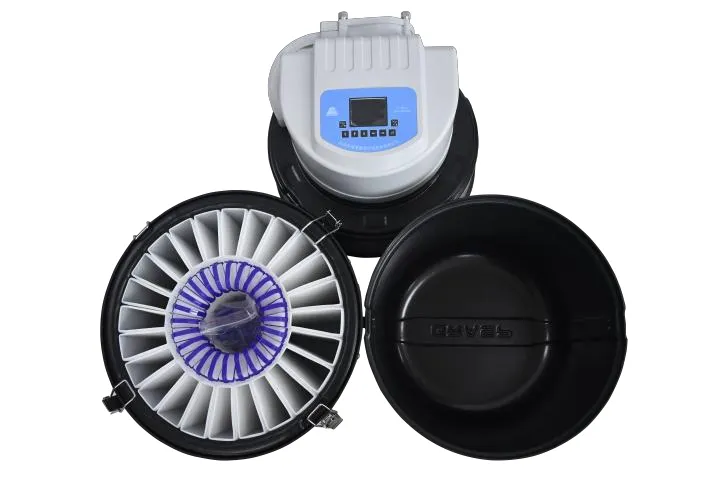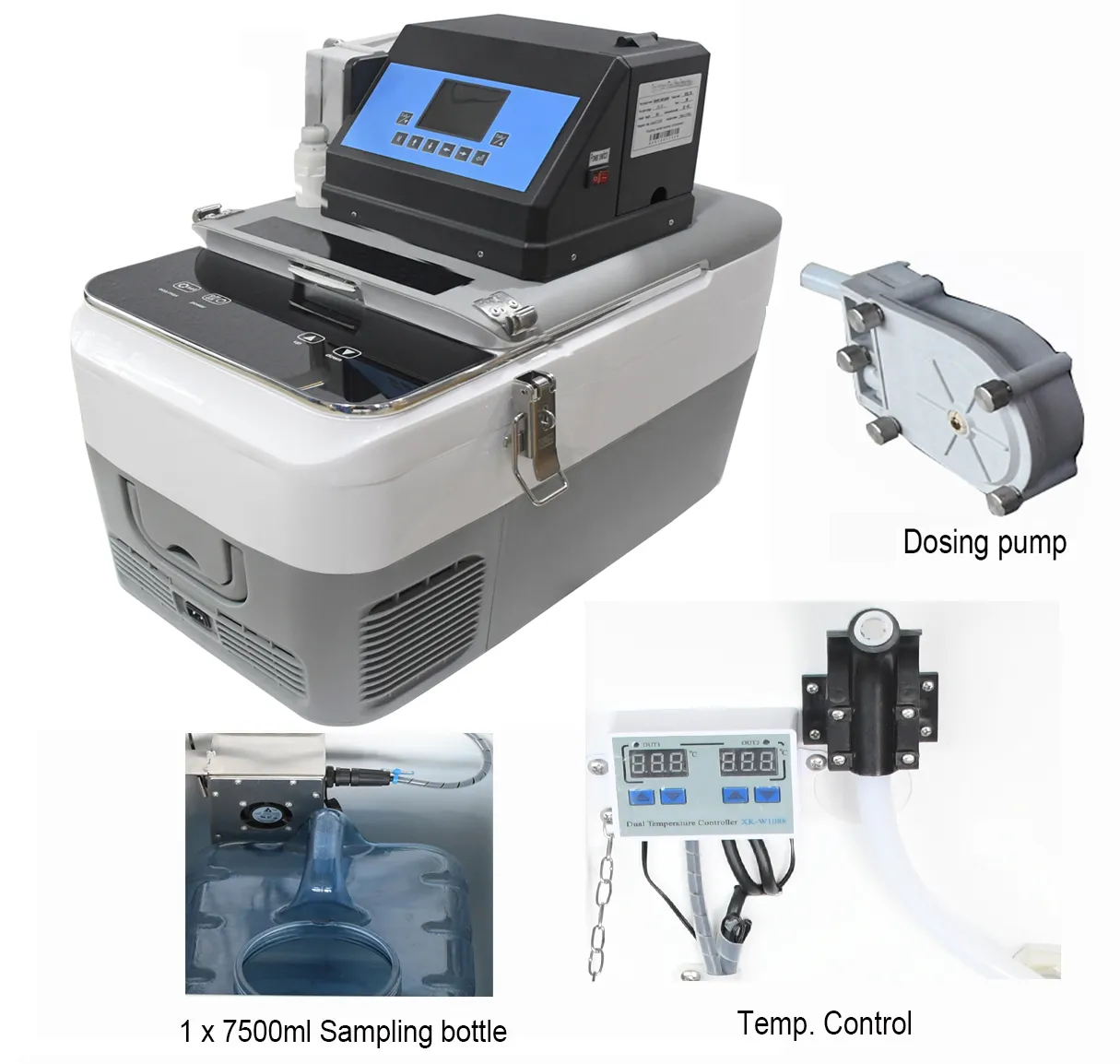Essential Water Sampler Types
Apr . 21, 2025
When it comes to environmental analysis, wastewater treatment, or drinking water inspection, water sampler types play a crucial role in collecting representative water samples for laboratory analysis. These devices are essential for understanding water quality over time and under varying conditions. From basic grab samplers to high-tech programmable models, the variety of water sampler types available today makes it easier to perform precise, compliant, and repeatable sampling across multiple industries.
The most common water sampler types include grab samplers, automatic samplers, portable samplers, and composite samplers. Grab samplers are ideal for spot-checking water at a specific time and place—perfect for field inspections or quick quality checks. Automatic samplers, on the other hand, are programmable and can take samples at predefined intervals or in response to environmental triggers like rainfall, flow rate, or contamination spikes. Composite samplers combine multiple individual samples over a set period to represent average water quality, often used in industrial discharge monitoring or wastewater plants.
Other specialized water sampler types include deep-water samplers for oceanographic research, point samplers for targeted depth analysis, and refrigerated samplers that preserve the integrity of volatile or temperature-sensitive samples. Some systems integrate with telemetry for remote access, while others connect to sensors or flow meters to trigger sample collection automatically.
Choosing the right water sampler types depends on the goals of the sampling project, whether it’s regulatory compliance, environmental protection, industrial process control, or academic research. The evolution of samplers toward automation, smart control, and rugged design ensures more consistent and reliable data collection in even the most challenging environments.

The Role of the Water Sampler in Modern Water Quality Assessment
A water sampler is not just a tool—it’s a critical instrument that enables scientists, engineers, and environmental officers to understand what’s really happening beneath the water’s surface. Whether used in a river, treatment plant, cooling tower, or drinking water pipeline, a water sampler makes it possible to collect uncontaminated, representative water samples for analysis in labs or on-site.
Modern water sampler units are equipped with advanced features that go far beyond simple collection. Many have digital displays, programmable controllers, and even GPS integration for logging sample location. These instruments help comply with local and international standards set by agencies like the EPA, WHO, or ISO.
A good water sampler must prevent contamination and ensure sample integrity. Materials such as PTFE, glass, and stainless steel are commonly used for components that come into contact with the sample to minimize interaction and preserve chemical balance. In the case of automatic samplers, multiple containers are used to segment samples by time or volume, which is essential for flow-proportional and composite sampling.
Beyond environmental applications, water samplers are also widely used in the food and beverage industry, pharmaceutical production, power plants, and chemical factories where water quality monitoring is integral to safety and compliance.
As environmental regulations become stricter, the demand for accurate and repeatable sampling is growing—and the water sampler stands at the heart of that process, offering a dependable method to monitor changes in water composition, identify pollutants, and ensure human and ecological health.

How Top Water Sampler Manufacturers Deliver Reliability and Innovation
When it comes to quality, durability, and performance, choosing the right water sampler manufacturers makes all the difference. These companies are responsible for designing equipment that works flawlessly in diverse conditions—from laboratory basins to open rivers, from drinking water systems to highly contaminated industrial effluents.
Leading water sampler manufacturers such as Teledyne ISCO, YSI, Hach, and Aquamatic have set the standard for sampler innovation. Their products are known for rugged construction, high-precision controls, and seamless integration with other water quality instruments. Most water sampler manufacturers offer a wide range of models to suit various industries, whether it’s a lightweight portable unit for fieldwork or a large-capacity refrigerated sampler for municipal wastewater plants.
What sets top water sampler manufacturers apart is their investment in R&D. Smart samplers with telemetry, remote diagnostics, and IoT integration are becoming more common. These models can be deployed in remote or hazardous areas and monitored from a control room or even a smartphone app. Many water sampler manufacturers now provide cloud-based platforms that store, analyze, and share sampling data with stakeholders.
Another critical focus is compliance. Samplers must often meet legal and environmental standards—so trusted water sampler manufacturers ensure their products are tested and certified for accuracy, contamination prevention, and data traceability.
Whether your project involves long-term water quality monitoring or a one-time pollution investigation, working with reputable water sampler manufacturers means getting equipment that won’t let you down, even under extreme conditions.
Understanding Water Sampler Price Ranges and What Influences Cost
If you're in the market for reliable sampling equipment, understanding water sampler price ranges is essential. The water sampler price can vary significantly based on factors like type, functionality, materials used, and brand. Knowing what features are truly necessary for your application can help you strike a balance between cost and performance.
Entry-level manual water samplers typically cost anywhere from $100 to $500. These include basic grab samplers used for quick spot checks in the field. They are usually hand-operated and made of plastic or stainless steel. While affordable, these models are best suited for low-volume or non-critical applications.
Mid-range automatic water samplers, ideal for field use or small-scale industrial monitoring, usually range between $1,500 and $5,000. These units offer programmable sampling, internal power supplies, and can collect composite samples over hours or days.
High-end water sampler systems, including refrigerated units, flow-proportional samplers, or samplers with telemetry and multi-bottle arrays, can go up to $10,000 or more. These are often used by municipalities, research institutions, or large industrial facilities that require detailed and continuous water quality records.
The water sampler price also varies by manufacturer reputation, warranty length, data logging capabilities, and included accessories such as tubing, bottles, and software. While the initial investment may seem high, it’s important to consider the long-term value of accurate, compliant, and low-maintenance equipment.
Ultimately, understanding the water sampler price in context helps buyers make informed decisions without overspending or sacrificing essential features. Comparing offerings from different water sampler manufacturers is the best way to find a cost-effective solution that meets your project’s specific needs.
Choosing the Right Water Sampler Types for Your Application
Selecting the best water sampler types starts with understanding the goals of your sampling project. Are you looking for a snapshot of current conditions or a full profile over time? Is your sampling site easily accessible or in a remote, hazardous location? Do you need your samples preserved for chemical stability?
If you need to monitor a sudden pollution event or rainfall runoff, a portable automatic sampler might be ideal. If your focus is regulatory compliance for wastewater discharge, a flow-weighted composite sampler is often the best choice. In-depth research in lakes or oceans requires deep-water water sampler types such as Van Dorn or Niskin bottles designed for submersion and controlled triggering.
Refrigerated water sampler types are essential for substances that degrade quickly or are affected by temperature. If space is a concern, compact models mounted on bridges or manholes can perform just as well with modern tech.
In all cases, consulting with top water sampler manufacturers can provide insights into customization options, maintenance requirements, and integration with other sensors and SCADA systems.
Each of the water sampler types offers specific benefits, and matching those benefits to your requirements is the key to successful water quality monitoring.
Water Sampler FAQs
What are the most common water sampler types available today?
The most common water sampler types include grab samplers, automatic samplers, composite samplers, and refrigerated samplers. Grab samplers are used for one-time sampling at a specific location and are ideal for field spot checks. Automatic samplers collect water at intervals and can be programmed for time or flow-based sampling. Composite samplers gather multiple samples over time into a single container for average quality analysis. Refrigerated samplers are used when sample preservation is crucial. Specialized samplers such as deep-water and point samplers are also used in scientific research and oceanography.
What is a water sampler and why is it important?
A water sampler is a device used to collect water samples for testing and analysis. It plays a critical role in environmental monitoring, wastewater management, industrial quality control, and public health. By using a water sampler, professionals can detect pollutants, ensure compliance with water quality regulations, and monitor trends over time. Samplers can be manual or automatic, portable or stationary, and are often integrated with data logging and communication systems for modern water monitoring programs.
How do I choose between different water sampler manufacturers?
Choosing among water sampler manufacturers depends on several factors, including your application, budget, sampling environment, and the type of analysis required. Reputable water sampler manufacturers offer certified, reliable products backed by technical support and warranty. Consider whether the manufacturer specializes in portable or industrial systems, if their samplers support remote monitoring, and whether they provide replacement parts and calibration services. Look for manufacturers with a proven track record in your specific industry, such as municipal water, environmental research, or industrial processing.
What influences the water sampler price the most?
The water sampler price is influenced by multiple factors: the type of sampler (manual vs. automatic), materials (plastic vs. stainless steel), sampling volume, included features (such as refrigeration, flow measurement, or telemetry), and the brand. High-end models with advanced programmability and remote access naturally cost more than basic manual models. Additionally, samplers designed for harsh environments or scientific research tend to be more expensive due to durability and precision requirements. Always consider the long-term cost-benefit ratio, including maintenance and operational efficiency.
Can a water sampler be used in both field and lab settings?
Yes, many water sampler types are designed for dual-use. Portable samplers can be deployed in the field and then brought back to the lab for sample handling and analysis. Lab-specific samplers often have features like controlled stirring, temperature control, or automated pipetting. Some samplers are modular, meaning they can be configured for field use with rugged casing and battery power, then adapted for lab use with more sensitive equipment. Discussing your needs with reliable water sampler manufacturers will help ensure you select a model suitable for your complete workflow.
Related Products
Related News























